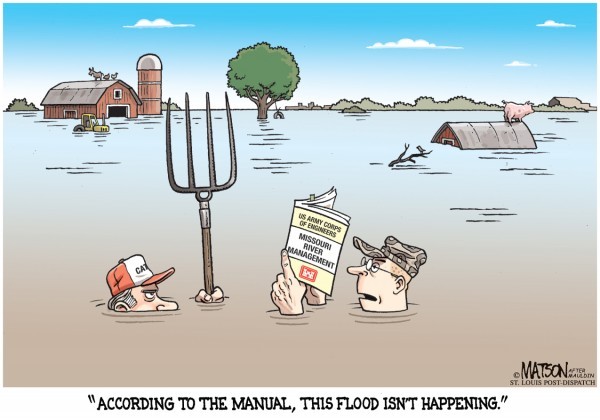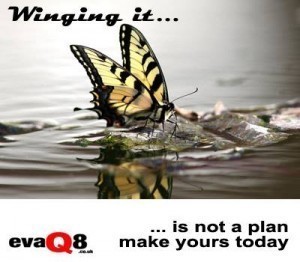TED recently published a captivating talk by (now retired) astronaut Chris Hadfield. You might remember him from his unforgettable “Space Oddity” with over 21 million views on You Tube. He describes in vivid detail how his extensive training helped him cope with the complexity, sheer pressure as well as dangerous and terrifying situations not only during his space missions but also in life.
This high-flying astronaut’s totally down-to-earth approach made me realize what a brilliant example Chris makes for Resilience. It got me thinking just how immensely powerful training is – physical as well as mental – in taking control of what otherwise are ‘hard-wired’ biological responses (fight, flight, freeze).
What is fear?
I think we can agree that it is a powerful emotional force that spans a particularly unpleasant inner spectrum ranging from the first stirrings of unease or apprehension to eventually blind terror all accompanied by a large range of physical symptoms. Taking a temperature reading along any imaginary fear barometer for both physical and mental states is a highly subjective affair and you can find lots of free resources on the web if you wish to delve into this further. More importantly is the realization that fear is one giant paradox for it is both real and fantasy – but with very real consequences.
Fear – what Fear? …. a Quizz

You might recognize the following quotes. Go ahead and have a bit of fun: treat them like a quiz. The footnotes will tell you if you got them right.
“Fear is not real, it’s a product of the thoughts you create. Do not misunderstand me. Danger is very real. But fear is a choice.” 1
“I must not fear. Fear is the mind-killer. Fear is the little-death that brings total obliteration. I will face my fear. I will permit it to pass over me and through me. And when it has gone past I will turn the inner eye to see its path. Where the fear has gone there will be nothing. Only I will remain.” 2
“Mindfulness is running straight into reality. It does not insulate you from the pain of life – rather, it allows you to delve so deep into life that you pierce the pain barrier and go beyond suffering.” 3
So, what do you think?
Although these quotes come from three very different corners of reality past and present I think they all capture the fear paradox really well.
One further point is also very important I think, especially with the general emphasis tending to value conquering or transcending fear – and that is the understanding and embracing that fear is only human.
Feeling Fear is only Human – Not a Sign of Weakness
Feeling fear is inevitable.
Everybody will feel aspects of the fear spectrum at some time. Fears are thoroughly human emotions. You notice that I’m purposefully using the plural here – for being able to differentiate where on the ‘barometer’ you are when and for how long with what kind of fear is the very first step in taking control.
Get to know your fears and name them.
Fear is normal – the Difference between Fear and Panic is Control
If you learn to control apprehensions and fears you can turn them into assets, treat them like a guide that can help you focus. Fears are normal.
The difference between fear and panic is control.
Fear does not have to shut you down. It can wake you up.
Fear can guide you because you can learn to recognize and respect it. Through training you acquire expertise that will kick in for you should things go wrong where fear suddenly might explodes onto the scene. There might even be an app for that 😉
But how do I go about learning to control fear?
Sure, this is all very well I hear you say, but what kind of training? I can’t train for everything. Besides, my life is kind of just ‘normal’ so what’s the point?
I don’t want to sound like a certain ad but “every little helps” really does apply here – especially if you do a little bit a lot of times. And forming a new habit so to speak does not have to be boring.
Learning to Control Fear is simply Amazing
 Go play, have fun – in the real world out there and away from virtual reality screens at least 90% of the time. Try completely new activities – and get good at them. Any new skill or trick you add to your toolbox will come in handy at some time in some way.
Go play, have fun – in the real world out there and away from virtual reality screens at least 90% of the time. Try completely new activities – and get good at them. Any new skill or trick you add to your toolbox will come in handy at some time in some way.
Then, at the end of your fun activity where you’ve focused both your mental and physical resources, relax. Well, not quite that fast for here lies another paradox. Relax does not simply mean letting go, tune out or turn off. That would be closer to sleep.
No, I mean learn to relax as in mindfulness training and meditation – which is really just another activity only of a very different nature, even if it sounds a bit alien at first. There are many different approaches out there and so you’re bound to find one that’s just right for you. In the end it will help you further hone your mental focus and resources – which, naturally, adds greatly to your personal resilience; for “normal” life has it’s way of suddenly and quite unexpectedly ceasing to be simply be just “normal” – whatever that means to you now that you’re beginning to be in charge of your fears.
Monika
Tweet
Thank you for sharing, raising awareness for Emergency Preparedness.
For more EVAQ8 blog simply use the right hand navigation. For emergency kits and practical resources use the top navigation. For FREE resources head over to our Preparedness Hub and find out why we use humour. If you like this post, please share it to help raise awareness for Emergency and Disaster Preparedness. Thank you!
Find EVAQ8 on social media, like and follow us!
- 1 Will Smith in the 2013 Movie ‘After Earth’
- 2 Frank Herbert, Dune (1965)
- 3 Banthe H. Gunaranta, Buddhist Monk (year unknown)
- also see:
Watch @tferriss‘s new TED Talk about why you should define your fears: https://t.co/BWtjAJww4q pic.twitter.com/GaDEcFegWx
— TED Talks (@TEDTalks) June 12, 2017


 Finding the right kind of optimism is the real challenge here. Optimism is not just one thing. It is complex and means different things to different people. Optimism is interesting because it comes in different flavours and shades. Contrary to popular belief, ‘resilient’ optimists do not view the world simply through rose-tinted-glasses. Resilient optimists acquire a certain kind or flavour of ‘realistic optimism’ that is just right – the ‘magic’ Goldilocks principle: just right.
Finding the right kind of optimism is the real challenge here. Optimism is not just one thing. It is complex and means different things to different people. Optimism is interesting because it comes in different flavours and shades. Contrary to popular belief, ‘resilient’ optimists do not view the world simply through rose-tinted-glasses. Resilient optimists acquire a certain kind or flavour of ‘realistic optimism’ that is just right – the ‘magic’ Goldilocks principle: just right. Wishing you an imaginative and inspiring weekend, and apologies if the above feels a bit like a roller-coast ride; as a mental agility exercise it was meant to be and hopefully also entertaining, thought- and action provoking. Monika
Wishing you an imaginative and inspiring weekend, and apologies if the above feels a bit like a roller-coast ride; as a mental agility exercise it was meant to be and hopefully also entertaining, thought- and action provoking. Monika 

 As a somewhat removed Swiss observer yet from ‘within so to speak as someone who lives here I am continually amazed at the British: the speed and boundless generosity with which communities have come together, pooling resources and sheer man (and woman and child!) power to help each another as well as to offer help across wider areas. In fact, generosity is and was so overwhelming that this morning the local newspaper
As a somewhat removed Swiss observer yet from ‘within so to speak as someone who lives here I am continually amazed at the British: the speed and boundless generosity with which communities have come together, pooling resources and sheer man (and woman and child!) power to help each another as well as to offer help across wider areas. In fact, generosity is and was so overwhelming that this morning the local newspaper 


 While the decor may be imaginary, what we talk about and share in here is very real and concerns us all:
While the decor may be imaginary, what we talk about and share in here is very real and concerns us all:


